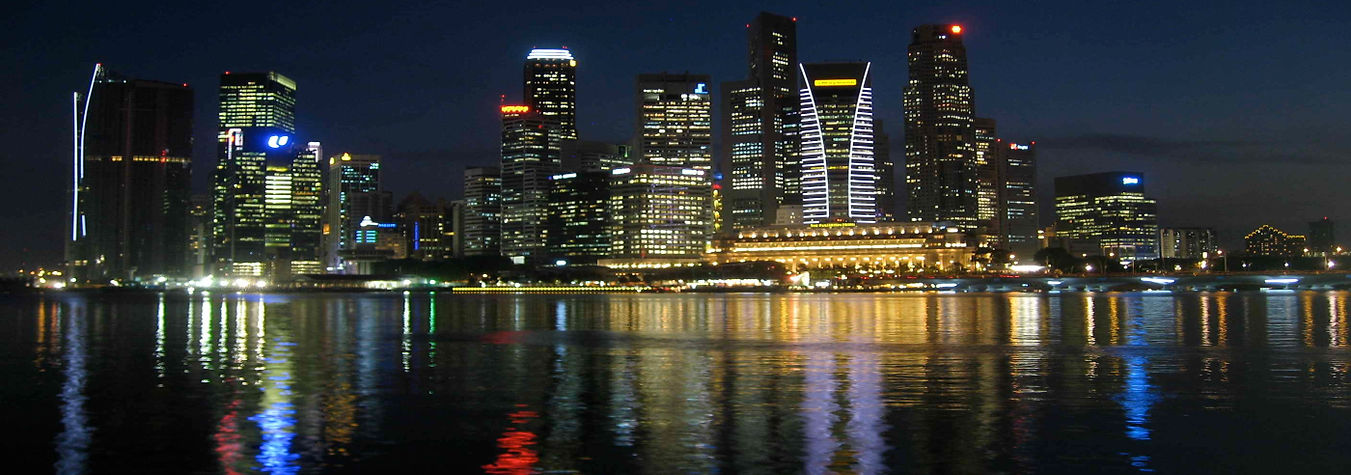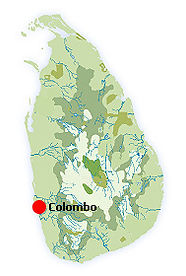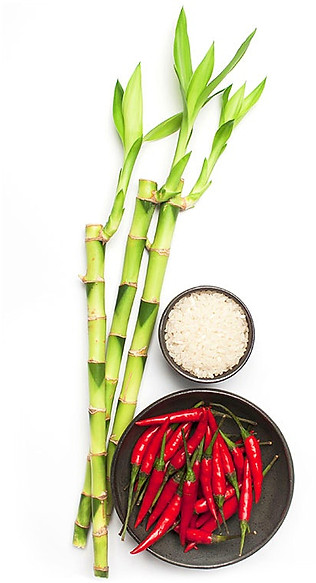
COLOMBO
Colombo, the capital of Sri Lanka, has a long history as a port on ancient east-west trade routes, ruled successively by the Portuguese, Dutch and British. That heritage is reflected in its its architecture, mixing colonial buildings with high-rises and shopping malls. The imposing Colombo National Museum, dedicated to Sri Lankan history, borders sprawling Viharamahadevi Park and its giant Buddha.
The legacies of colonial Colombo's garden roots are still very much intact along its often-shady boulevards. Fort is a compelling place thanks to ongoing restoration of its landmark colonial architecture, while Pettah brims with markets and rampant commerce. Even traffic-clogged Galle Rd is getting spiffier with glossy new hotel complexes.
Colombo’s cosmopolitan side supports ever-more stylish eateries, galleries and shops. Surprises abound: with a little exploration you'll find great local food, characterful shops and tiny, convivial cafes. Meanwhile, a building boom like no other is transforming the city's skyline.
Although it's unlikely it will reclaim its 19th-century moniker 'the garden city of the East', Colombo has nevertheless emerged as a must-see stop in Sri Lanka. No longer just the sprawling city you have to endure on your way to the beaches, it has become a worthy destination in its own right and makes an excellent start – or finish – to your Sri Lankan adventures.

Colombo Information and Google Map
PROVINCE : WESTERN PROVINCE
DISTRICT : COLOMBO DISTRICT
POPULAR : CAPITAL OF SRI LANKA
WEATHER : 30 °C
TYPE : COMMERCIAL
POPULATION : 647,100
AREA : 37.31 km²
PHOTO GALLERY

Food & Drinks
SEAFOOD
STREET FOOD
SRI LANKAN
SEAFOOD
MARKET
SEAFOOD
JAPANESE
CAFE
CAFE
SWEETS
Historical Background
The port of Colombo, around which the city developed dates back to the 5th Century as Roman, Arabian and Chinese vessels visited here to trade food and spices in exchange for gems with the Kings of Sri Lanka. Thereafter, Colombo has had a battle scarred past with the Portuguese, Dutch and the British battling each other for dominance of this strategic port which finally fell to the British in 1796. British colonialism ended with the granting of independence in 1948, but Colombo’s colonial legacy is still very evident in the old quarter of the city with many buildings having architectural relation to the period under which they were built and many of the streets being named after famous colonial personalities. Sri Jayawardenapura Kotte on the outskirts of Colombo, is currently the administrative capital of the island and was once the ancient Royal capital as well under the Kotte Kingdom. The chequered history of Colombo contributes to a wide range of communities which include Sinhalese, Moors, Tamils, Burghers (people of Portuguese and Dutch descent), Chinese and Malay people.
Shopping
Shopping in Colombo offers a range of options for the bargain hunter right up to the most discerning of shoppers. Designer label clothing brands can be picked up at a fraction of the price you would pay back home at Odel and House of Fashion, which are the two main department style stores. Also very popular are the lifestyle stores like Gandhara, Paradise Road and Sooriya which feature chic homeware items in keeping with the latest global trends. For an inspiring experience visit Barefoot, which carries a good collection of handlooms and handmade silk clothing, has an art gallery and a quaint garden cafe at the back to cool off in. For the ultimate bargains take a trip to the Pettah Bazzaar, where you can pick up anything from electronics to curios…no warranties of course!
Events
Red Dot is a huge admirer of the efforts that have gone into developing the Galle Literary Festival. The inaugural Festival in 2007 was immediately listed by Harpers Bazaar as one the six most appealing literary festivals, alongside such gatherings as the Hay Festival in Columbia and the Wexford Book Festival in Ireland. We applaud the efforts of the Galle Festival organizers in celebrating and encouraging Sri Lanka's literary heritage. This annual event is a treat for those interested in English literature, the creative arts and the cultural heritage of Sri Lanka.
Climate
Colombo has a typical tropical climate being warm and humid and has an average temperature of 27°C. Humidity varies from 70% during the day to 90% at night with bright and sunny days being the norm. The South-West monsoon between May and August brings most of the rainfall and temperatures are a little cooler at this time.
Sights
National Museum
Established in 1877, the National Museum in Colombo is best known for its collection of antiques and objects of art. The museum’s library carries a collection of over 500,000 publications on Sri Lanka and over 4,000 ola leaf manuscripts. Prominent exhibits are the regalia of the King of Kandy, ancient jewelry and a rare collection of demon masks and wood and ivory carvings. Depictions of temple frescoes and a vast collection of Buddhist and Hindu statues are also on display. Chinaware from the Dutch colonial period and numismatics from the earliest period to modern times feature prominently.
Natural History Museum
Located behind the National Museum in Colombo, this museum is dedicated to the bio-diversity of the country. The exhibits include birds, mammals, reptiles, sea-mammals, insects, botanical specimens, gems and geological specimens of Sri Lanka.
Dutch Museum
Located in the Pettah and housed in a 17th Century house from the Dutch colonial era, the Dutch Museum was recently completely restored with assistance from the Netherlands. The exhibits depict the political, social and economic conditions in the Maritime Provinces of the Island under the Dutch rule and give an idea of the culture of the Kandyan Kingdom during the Dutch period. Many items of period furniture and porcelain are also on display.
Nightlife
Colombo has an active nightlife with after-dark entertainment taking place around the Fort and Cinnamon Gardens area. If you plan to go dancing and clubbing, dress well and show up late as most of the action doesn’t get started until around midnight. There is some competition for admittance and it is not unusual for parties of single men to be turned away – once you’re in though, the party goes on all night. Known as the Paradise Isle of the Indian Ocean, it lives up to its reputation and even though nightclubs are few the fun provided is in abundance.
Kelaniya Raja Maha Temple
The Kelaniya Raja Maha Viharaya is located on the outskirts of Colombo and is believed to be one of the earliest Buddhist dagobas in the country. According to the Mahavamsa, the paddy heap shape dagoba marks the spot where Lord Buddha sat on a gem studded throne and preached the Dhamma on his first visit to Sri Lanka 2,500 years ago on the invitation of the Naga King Maniakkika. History indicates that the temple was built in 3 BC by King Yatala Tissa but the dagoba existed prior to that. The temple has been destroyed by rival Kings and colonialists over time and has been rebuilt on numerous occasions, with the last time being in 1767 by Kirthi Sri Rajasinghe the King of Kandy, after the Portuguese invasion of the Maritime Provinces. Legend has it that the gem studded throne from which the Buddha preached the dhamma is enshrined in the main dagoba. In January, the Kelaniya Raja Maha Temple holds a colourful religious pageant to mark the first visit of the Buddha to Sri Lanka.
Duruthu Perahera
The Duruthu Perahera in Kelaniya is a colorful and exciting pageant held in January to commemorate the first visit of Lord Buddha to Sri Lanka in the ninth month of his enlightenment. Conducted by the Kelaniya Raja Maha Temple, it is of the biggest pageants in the country, and is conducted over three days, with the final day being the most splendid and coinciding with the full moon. On the first day the relic casket is carried three times around the temple by the temple chiefs; the second day sees the parade takes place within the precincts of the temple with a group of drummers heralding the event. The third day is the Duruthu Full Moon Poya day when the main perahera takes to the streets around the Kelaniya temple in all its grandeur, where up to 100 elephants in colourful livery form the centre point of the event.
Navam Perahera
The Navam Perahera is another large and very popular three day Buddhist cultural pageant held in February at the Gangarama Buddhist Temple in Colombo. This Perahera revives ancient forms of dancing and traditional dance troupes from all parts of the country converge in Colombo for this spectacular event. Seating accommodation for a large number of persons is provided without charge and seats with a better vantage point are available for a fee.
Royal Colombo Golf Course
The Royal Colombo Golf Club is the oldest golfing institution in the country having been established in 1879. Its 18-hole course is flat with broad fairways featuring numerous water hazards, and at the sixth hole the hill country train line travels across the green. Despite being located in the heart of the city, the environment is quiet and relaxing and its clubhouse is an excellent example of a typical British Colonial Club.
Bellanwilla Temple
The Bellanwilla Temple is a one of the most sacred Buddhist sites in Colombo as it has on its premises one of the 32 Bo trees grown from saplings from the Jaya Sri Maha Bodhi in Anuradhpura. Sangamitha Theri brought the Jaya Sri Maha Bodhi to Sri Lanka as a sapling from the Bo tree under which the Buddha attained enlightenment in Bodhgaya. The ancient temple features richly sculpted statues of the Buddha and many murals depicting his life.
Colonial Architecture
The 5km rampart extending from the Galle Face Hotel up to the entrance to the Port of Colombo was built by the Portuguese in the 16th Century, and later improved by the Dutch and is the best example of the monumental feats of colonial architecture in Colombo. Built to defend the Colombo Fort against a seaborne attack it had a row of heavy canons on the top of the fortified seawall. Within the Fort and Pettah region, typical early 19th Century British architecture can be found in almost every corner though the old buildings seem to be giving way to the more maintenance friendly glass and steel structures of modern engineering.
Churches of the Colonial Period
The Dutch and Portuguese colonialists were inveterate followers of Christianity and one their many goals in the colonies was to spread the religion by any means possible. In keeping with this philosophy, they built large and extremely ornate churches all over the island. In Colombo, the best examples of these churches are to found in the old quarter of the city like the Fort, Pettah, Woolvendaal and Mutwal areas.
Architecture of Geoffrey Bawa
Colombo is home to the most prestigious design of Geoffrey Bawa widely acclaimed as the father of modern Asian architecture. When the administrative capital of the country was moved to Sri Jayawardenapura Kotte, Bawa was commissioned by the Government of Sri Lanka and given the task of finding a location and designing the new House of Parliament. He chose to locate the new complex on the Diyawanna Oya, a lake in Kotte, which required the building of a manmade island in the middle of it on which the new Parliament would sit. Today the Parliament complex stands as a testament to his creative genius featuring a copper roof and large open spaces and the Chamber of the House features sculptures designed by him hanging from the vaulted ceilings. His studio in Colombo on Alfred House Gardens, also bears his signature style of courtyards, ponds and open walkways and has now been converted into the Paradise Road Gallery Café which is well worth a visit.
Hindu Kovils
Colombo abounds with Hindu Kovils and a visit to one will be an unforgettable experience, with their richly sculpted gopurams and statues providing a riot of colour. The best time to visit would be at the time of a festival to one of the many Hindu deities when all the priests take part in a ceremony which involves the ringing of bells and the chanting of prayers amidst a heady environment of sweet incense smoke and oil lamps. Colombo’s oldest Kovil is the Sri Kailawasanthan Swami Devasthanam in Fort is extremely ornate, but many other Kovils in areas where there is a predominant Tamil population like Wellawatte and Grandpass are just as spectacular.
Inland Wetlands
On the outskirts of Colombo lie several little known bird watching zones set amidst protected marshes and inland waterways. The Talangama Wetland and the Diyawanna Oya hold an abundance of water birds as do the Attidiya Marshes in the suburbs to the South of Colombo. Further South the Bolgoda Lake which is Sri Lanka’s largest natural freshwater basin, provides a rich habitat for larger water birds and birds of prey and also holds an abundance of amphibians and reptilian life.
Maligathenna Temple
Located outside of the Colombo city limits, an hour from its centre, the Maligathenna Temple is a forest hermitage located at the highest point within the Colombo District. With a recorded history dating back to over 2,000 years, Maligathenna is claimed to have been the site where King Walagambahu hid the Sacred Tooth Relic from the invading Portuguese forces when they captured the Maritime Provinces. Sitting on a two-tiered rock the temple has a commanding view of the surrounding countryside and around it lie 20 caves which can be explored.
Art Galleries
Colombo is the probably the best place to see the wide spread artistic talent in the country at a number of galleries. The Colombo Art Gallery on Green Path features some of biggest exhibitions of the better painters and photographers, but others such like the Barefoot Gallery and the Paradise Road Gallery also feature prominent artists in their small halls. On the weekends, amateur painters mostly from the outstations bring their artworks to the pavements outside the Victoria Park on Green Path and transform the drab concrete sidewalk into a celebration of colour.








